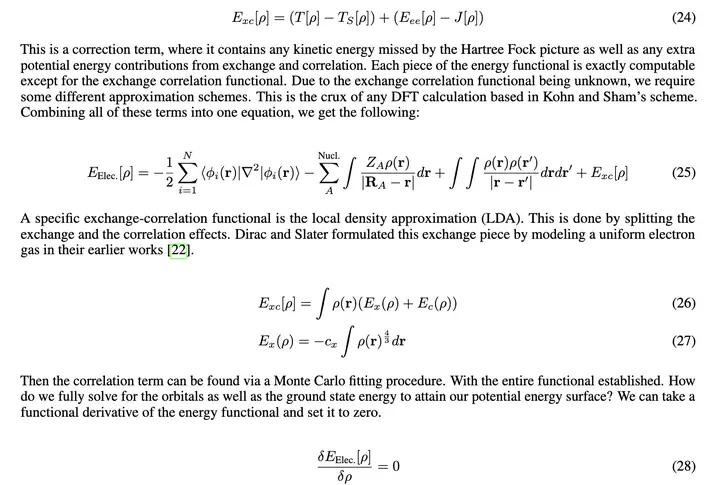 Some mathematics for chemistry??? Who really knows?
Some mathematics for chemistry??? Who really knows?Gaining a mechanistic understanding of the role that catalysts play in chemical processes is essen- tial for enhancing their efficiency, rate, and recyclability. Yet, there exists a notable challenge in completely characterizing a reaction using experimental data alone. This challenge has spurred the development of computational methods designed not only to replicate existing experimental results but also to provide deeper insights that go beyond what can be achieved through purely experimental means. Electronic structure theory and specifically density functional theory (DFT) aim to achieve this through the characterization of potential energy surfaces. With access to the surface, a computational chemist can run optimization procedures to discover energy minima and saddle points. These points are paramount as they characterize the path chemical reactions take. This paper aims to review the basic theory, catalytic applications, and an example calculation to give new chemists and chemical engineers a resource to break into electronic structure theory.
To view this project please click on the PDF link above.